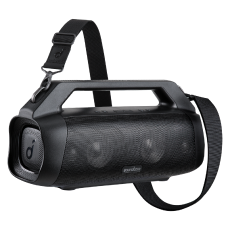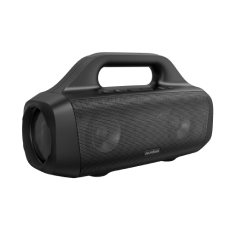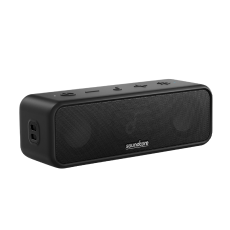Headphone Impedance: A Comprehensive Guide
It is important for every audiophile and every lover of music to have a clear understanding of the headphone impedance. This technical specification, while often overlooked, plays a pivotal role in determining how your headphones interact with different audio sources.
In this guide, we delve into the concept of headphone impedance, exploring its definition and significance. We’ll also compare high impedance and low impedance headphones in multiple aspects to shed light on the role impedance plays in headphones. Lastly, we offer a brief choosing guide to help you choose headphones with the right impedance value. Get started!

What Is Impedance in Headphones?
So what is impedance in headphones, and why does it matter in the realm of audio equipment?
Here is the headphone impedance meaning: It is the opposition that electrical current encounters as it flows through a circuit, and in the context of headphones, it directly influences how efficiently electrical signals are converted into sound waves.
To comprehend its significance, let's unpack the role of impedance in shaping your listening experience.
How Does Impedance Affect Volume?
You must have wondered why some headphones seem to produce louder volumes than others, even when connected to the same source.
The answer lies in the concept of impedance and its profound impact on volume output. Let's unravel the mysteries behind how impedance influences the volume levels of your headphones.
1. High Impedance, Lower Volume
High impedance headphones require more voltage to produce the same volume level compared to low-impedance headphones. This means that when connected to the same source, high-impedance headphones may sound quieter unless driven by a powerful amplifier capable of supplying sufficient voltage.
2. Low Impedance, Higher Sensitivity
Low-impedance headphones are more sensitive to the electrical signals from your audio source, resulting in louder volume levels with less power. This makes them ideal for use with portable devices like smartphones and tablets, which typically have limited power output.
3. Frequency Response Considerations
Impedance can also affect the frequency response of headphones, particularly at different volume levels. Some headphones may exhibit changes in frequency response or distortion at higher volumes due to impedance variations, impacting the perceived sound quality.

High Impedance vs. Low Impedance Headphones
Choosing between high-impedance and low impedance headphones can significantly impact your listening experience and compatibility with different audio devices. Delving into the nuances of these two types of headphones unveils distinct advantages and considerations that cater to diverse preferences and setups.
1. Power Requirements
High-impedance headphones typically require more power to achieve optimal volume levels, making them well-suited for use with dedicated headphone amplifiers or audio equipment with robust output capabilities. In contrast, low-impedance headphones are more efficient in converting electrical signals into sound, making them ideal for portable devices like smartphones and laptops without sacrificing volume or audio quality.
2. Sound Accuracy and Detail
High-impedance headphones often offer greater precision and detail in audio reproduction, especially when paired with high-quality amplification equipment. It is a common advantage of high impedance headphones. Their impedance characteristics can result in tighter control over drivers, minimizing distortion and enhancing clarity across the frequency spectrum. On the other hand, low-impedance headphones may sacrifice some fine detail in favor of efficiency, but they can still provide a compelling listening experience, particularly for casual listening or on-the-go usage.
3. Versatility and Compatibility
Low-impedance headphones are more versatile in terms of compatibility with various audio sources, including smartphones, tablets, and laptops, due to their lower power requirements. This versatility makes them a convenient choice for everyday listening scenarios where portability and ease of use are paramount. However, high-impedance headphones excel in specialized audio setups where audiophile-grade amplification and source equipment are utilized, catering to enthusiasts seeking the utmost in sound quality and fidelity.

How to Choose Headphone Impedance?
Selecting the right headphone impedance is crucial for optimizing your audio experience, but navigating the plethora of options can be daunting. Understanding how to choose headphone impedance ensures compatibility with your audio equipment and preferences, unlocking the full potential of your listening setup.
- Consider Your Audio Source: Evaluate the devices you'll primarily use with your headphones, whether it's a smartphone, laptop, dedicated headphone amplifier, or studio equipment. If you plan to use your headphones mainly with portable devices, opt for low-impedance headphones that can efficiently draw power from these sources without compromising volume or sound quality.
- Match Impedance with Amplification: If you're investing in high-impedance headphones or already own them, ensure compatibility with your amplification setup. High-impedance headphones typically pair well with dedicated headphone amplifiers or high-quality audio interfaces, providing sufficient power to drive them to their full potential and unlock their superior audio fidelity.
- Consider Your Listening Environment: Reflect on where you'll use your headphones most frequently, whether it's at home in a quiet setting, on the go in noisy environments, or in a professional studio environment. For portable use or situations where ambient noise is a concern, low-impedance headphones offer greater efficiency and volume output, ensuring an immersive listening experience without external distractions.
By taking these factors into account, you can confidently choose a pair of over ear headphones with impedance that aligns with your audio sources, amplification setup, and listening preferences, ensuring an optimized and enjoyable listening experience across various scenarios.
FAQ
Are higher impedance headphones better?
Higher impedance headphones are not inherently better; their suitability depends on your audio setup and preferences. High-impedance headphones typically require more power to drive but may offer better sound quality when paired with suitable amplification equipment. However, for portable devices or casual listening, lower impedance headphones might be more practical and offer sufficient sound quality.
How much impedance is good for headphones?
The ideal impedance for wired or wireless headphones varies depending on your usage scenario and audio equipment. For portable devices like smartphones and laptops, headphones with an impedance below 50 ohms are generally recommended for efficient power usage and compatibility. High-impedance headphones (above 100 ohms) may be preferred for audiophile-grade setups with dedicated amplifiers, providing enhanced sound quality and detail.
Does impedance affect headphone sound quality?
Yes, impedance can significantly impact headphone sound quality, particularly when paired with appropriate amplification. High-impedance headphones tend to offer better sound quality with lower distortion and improved driver control when driven by capable amplifiers. However, excessively high impedance may lead to compatibility issues and suboptimal performance when used with standard audio sources. Conversely, low-impedance headphones are more compatible with portable devices and offer efficient power usage but may sacrifice some sound quality compared to high-impedance counterparts.
Conclusion
Understanding headphone impedance is paramount for achieving an optimal listening experience tailored to your preferences and equipment. Additionally, discerning the disparities between high-impedance and low-impedance empowers you to make informed decisions based on your listening environments and desired sound quality. By following the provided tips on how to choose headphone impedance, you can navigate the diverse array of options available in the market, ensuring that your headphones seamlessly integrate with your audio setup while delivering the desired audio fidelity and volume levels.














































